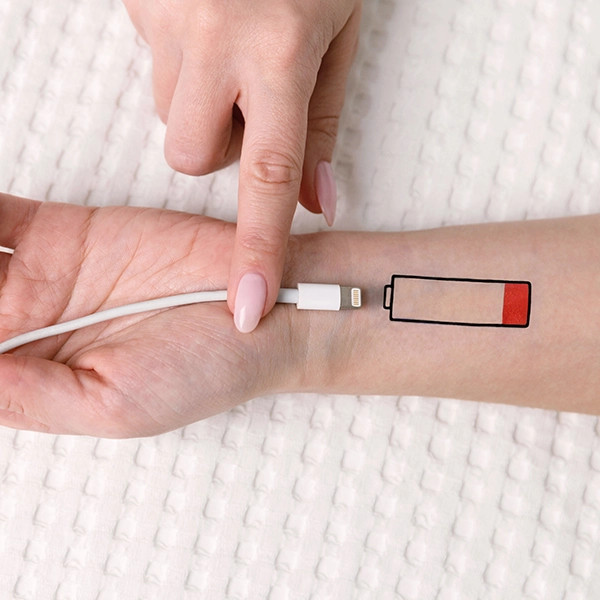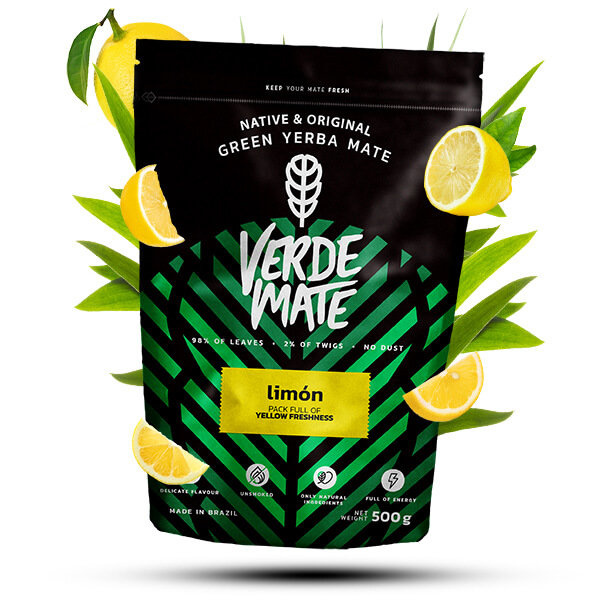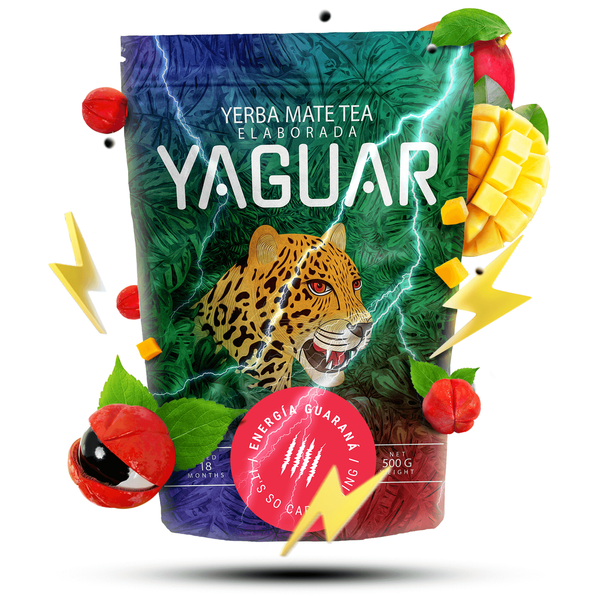Caffeine in yerba mate and coffee – why choose mate tea?

Yerba mate is prized for its original herbal taste, but also for its strong stimulating properties, making it considered by many to be a good alternative to coffee. Both drinking mate tea and coffee can have many benefits, and each brew has its own advantages and disadvantages. Which one is better and can yerba mate really replace coffee completely? We dispel any doubts!
Summary:
- What is caffeine and where can it be found?
- Caffeine content of yerba mate, coffee and other products
- Is there caffeine, mateine or maybe theine in yerba mate?
- Yerba mate vs caffeine – can it successfully replace coffee?
- Final conclusion. Why are we betting on yerba mate?
What is caffeine and where can it be found?
The first drink we associate with caffeine is coffee. Not surprisingly, it was in coffee beans that a hitherto unknown chemical compound, caffeine, was first discovered in 1819. This was made by a German chemist, Friedrich Ferdinand Runge. Twenty years later, scientists discovered caffeine in tea, and at the end of the 19th century, cocoa was also proven to be a natural source of the stimulant. Although caffeine became known to us relatively recently, plants with stimulating powers were discovered thousands of years earlier. According to legend, tea was discovered 3 000 years ago by the Chinese emperor Shennong. 600 BC, the ancient Maya living in South America used cocoa beans to prepare the bitter-spicy, stimulating drink Xococalit. Hundreds of years later, the Indians of the Americas discovered the properties of various species of holly, like for example yerba mate – some of which also exhibited stimulating effects. The Guarani Indians discovered the energising fruit of guarana and coffee was discovered by an Ethiopian shepherd in the 9th century AD.
How does caffeine work?
Today we already know that caffeine is a psychoactive substance, which means that it directly affects brain function. It stimulates the central nervous system, relieving the feeling of fatigue, improving concentration and reflexes, adding energy and speeding up the metabolism. Caffeine interferes with the action of adenosine, a substance responsible for the feeling of sleepiness, and by stimulating the release of dopamine, it has a positive effect on mood and relieves pain. This is why it can be found in the composition of some painkillers. Caffeine crosses the blood-brain barrier very quickly. It gives a "kick" to action, making it particularly desirable for those in need of a dose of energy. It stimulates a sleepy body in the morning, helps maintain better concentration during the day, while working or studying, and relieves the feeling of sleepiness in the evening. One could say that, in the right dose, caffeine is an excellent "cure" for fatigue and decreased energy. Unfortunately, excessive consumption of caffeine can lead to unpleasant consequences and regular intake can lead to addiction. So what is the best and healthiest source of caffeine?

Yerba mate versus coffee and other caffeine sources
The more inquisitive will certainly be interested in specific numbers. Admittedly, it is difficult to know exactly how much caffeine is in coffee, yerba mate or other drinks and products. It depends on a number of factors, such as the method of production, the species of product we use as the base of the stimulating brew, the amount of product we pour into the cup or mug, the method and time of brewing, and the temperature of the water we pour over the dried product. Over the years, natural sources of caffeine have been studied in various possible ways, so we can provide an average summary of the stimulant content of the various products:
- 1 litre of espresso coffee equals approximately 1691-2254 milligrams of caffeine
- 1 litre of brewed coffee equals approximately 386-652 milligrams of caffeine
- 1 litre of yerba mate equals approximately 358 milligrams of caffeine
- 1 litre of energy drink equals approximately 320 milligrams of caffeine
- 1 litre of tea equals approximately 124–418 milligrams of caffeine
- 1 litre of soda drink equals approximately 96-194 milligrams of caffeine
- 1 litre of decaffeinated coffee equals approximately 24-72 milligrams of caffeine
- 1 bar of chocolate equals approximately 10-31 milligrams of caffeine
The conclusion is simple: the most caffeine is found in coffee and the least in chocolate. Yerba mate, in terms of caffeine content in mg per 1 litre of brew, falls roughly in the middle of the list. Does this mean that it has a worse effect than coffee?
Is there caffeine, mateine or maybe theine in yerba mate?
Before going on to compare yerba mate and coffee, we need to clarify a point. When looking for information on caffeine in yerba mate, one can come across various, interesting articles and blog posts on the internet. Some say there is simply caffeine in mate, others say there is mateine in it, theine in tea and guaranine in guarana. What is it in the end, is there caffeine, matein or theine in yerba mate? The answer is simple. All these names describe the same substance – caffeine – and there is essentially no difference between them.
Yerba mate – can it successfully replace coffee?
The caffeine content means that coffee and yerba mate are often compared with each other. Is this right? In a way, yes. Which of the stimulating drinks is better? Let's take a closer look at four aspects:
Stimulation
Both drinks have a stimulating effect, aiding concentration and eliminating feelings of drowsiness. On the other hand, they work very differently. The stimulating effect after drinking coffee is almost immediate, but the caffeine level drops quite quickly (depending on the dose taken, of course, as well as individual circumstances), causing a sudden drop in energy and a feeling of weakness. Yerba mate, on the other hand, takes a little longer to stimulate the body, but the stimulating effect lasts much longer and is not followed by a sudden drop in energy.
Composition and other properties
In this respect, yerba mate and coffee go fairly equally. Both drinks are low in calories, as long as they are drunk without added sugar and milk. Coffee is a rich source of potassium, folic acid, vitamin E and B vitamins. It also contains a good amount of magnesium, but excessive coffee consumption contributes to its elimination from the body. In yerba mate, on the other hand, we have a whole set of vitamins (A, B, C and E) and minerals (including zinc, potassium, phosphorus, calcium, silicon and magnesium). It contains antioxidants, including the particularly important chlorogenic acid, soponins, theophylline and theobromine. It nourishes the body well and, when combined with the right diet and exercise, can even aid weight loss. Side effects? They are mainly due to the caffeine content and can occur with both excessive consumption of coffee and yerba mate, but with coffee the negative effects are much more troublesome.
Flavour
Taste is an individual matter, but in this respect yerba mate often loses out. There is no denying it, the infusion of Ilex paraguariensis is specific – tart and bitter. There are ways to reduce or completely cancel out the bitterness of mate, and once you become more familiar with its taste, you eventually begin to appreciate it. However, the truth is that many people are discouraged from drinking yerba mate after just the first sips. Now, let's consider what real black coffee tastes like, with no milk or sugar added – is it really tastier than yerba mate? Yes, a coffee sweetened with four teaspoons of sugar and 3/4 cup of milk is difficult to replace overnight with natural, herbal yerba mate, but we have a little life hack for you – mate tea can also be sweetened (preferably with natural and low-calorie sweetener)!
Method of preparation
On the surface, coffee seems more practical in terms of preparation. In the express version, all you have to do is pour the instant coffee into a mug, add boiling water, stir and you're done. Yerba mate, with all its brewing ritual and dedicated paraphernalia, can seem like something complicated at first. Well, but in order to take full advantage of the qualities of high quality coffee beans and prepare a good, tasty and aromatic brew, you need to spend much more time than preparing yerba mate using the traditional method. The beans must first be properly ground, then whisked in a sieve with a tamper and wait for the water to percolate the coffee during extraction. Every element of this process is of great importance. In fact, you may find that yerba mate is quicker and more enjoyable to make than coffee!
Final conclusion. Why are we betting on yerba mate?
Most of us, when we wake up every morning, are eagerly awaiting a dose of caffeine to give us the energy to get going. What goes into a cup, mug or calabash is up to each individual and we are not going to convince anyone by force. Some will choose an aromatic coffee, some a crisp green tea and others herbal guayusa tea. We bet on yerba mate, which definitely deserves to be called a healthy and tasty coffee alternative!
Source of information:
- Wikipedia: Mate (drink), Coffee, Caffeine.
- C.I. Heck, E.G. de Mejia, Yerba Mate Tea (Ilex paraguariensis): a comprehensive review on chemistry, health implications, and technological considerations, J Food Sci, 2007.




